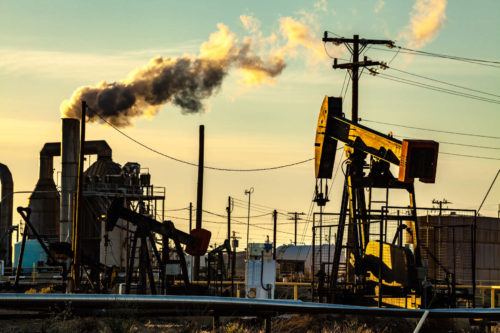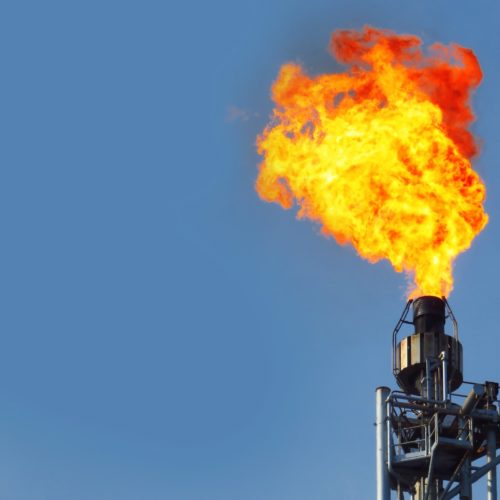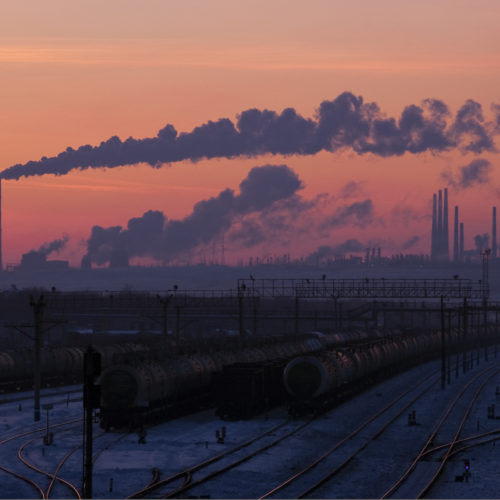Oil pumpjacks and pipelines criss cross the Midway-Sunset oil field as a cogeneration plant billows steam in the background, Kern County, California.

It’s Time for California to Face Its Dirty Oil Problem
A ruptured oil pipeline off the coast of Orange County, California, has spilled as much as 126,000 gallons of crude oil into the Pacific Ocean, closing beaches and threatening wildlife. The spill—the state’s largest in almost three decades—emanated from a damaged pipeline that carries oil to shore from an offshore oil platform.
As authorities race to contain and clean up the spill, the incident has drawn fresh attention to the contrast between California’s aggressive stance on climate change and its role in producing and refining climate-warming fossil fuels.
Indeed, California—a leader in electric vehicles, solar energy, and other clean energy technologies—is also one of the top oil producers in the United States and home to some of the dirtiest oil operations in the world.
Fortunately, new and emerging tools can help California plot the path to a cleaner and more climate-friendly economy. Modern monitoring abilities, data capture, and analytics provide visibility into the wildly varying carbon footprint of different petroleum resources. As the state seeks to phase out oil extraction, California can use these tools to focus its decarbonization efforts on the places and processes that will yield the fastest emissions reductions.
A Black Eye for the Golden State
Southwest of Bakersfield in California’s San Joaquin Valley, the Midway-Sunset oil field has produced billions of barrels of oil since it was first tapped in the late 1800s. It has also produced more than its share of carbon emissions. Barrel for barrel, Midway-Sunset produces even more climate-warming pollution than the more notorious Canadian oil sands, according to data from the Oil-Climate Index Plus Gas (OCI+).
The oil in Midway-Sunset has always been heavy and complex, requiring large quantities of energy both to extract and refine into end products such as gasoline and diesel fuel. As the oil field aged over the years, the energy demands associated with Midway-Sunset have only increased. Oil companies now inject steam into the oil field in “enhanced recovery” techniques to force the crude up to the surface. That energy-intensive process has enlarged the climate footprint of producing Midway-Sunset oil by a factor of four, according to a 2017 study.
Once the oil has been produced, refining it presents another set of climate challenges. The extracted oil ranges in consistency from a thick, peanut-buttery paste to a runny fluid. And Midway-Sunset’s depleted oil deposits are so waterlogged that the pumping operations bring up 10 times more water than oil.
A Refinery Giant
The refining process for this low-quality oil is where much of the disproportionate climate impact originates. Refining a single barrel of Midway-Sunset crude emits as much greenhouse gas pollution as refining about three barrels of crude oil from the Alberta oil sands, according to OCI+.
California’s rank among oil-producing states has slipped somewhat in recent years, from third to seventh, as states like New Mexico and Colorado have ramped up production. But California remains the third-largest oil refining state by refinery capacity, after Texas and Louisiana.
Producing and refining heavy oils, such as the Canadian oil sands, has been shown to generate significant amounts of fine particulate matter (PM2.5) and other air pollutants. These pollutants have been linked to asthma, cardiovascular disease, and lung cancer. Producing the similarly heavy crude at Midway-Sunset may therefore contribute to unhealthy air pollution in the Central Valley.
Nearby Bakersfield—which is subject to pollution from fossil fuel industry, agriculture, and other industry—has the worst year-round particulate pollution of any American city, according to the American Lung Association. And Kern County, the expansive Central Valley county where Bakersfield sits, has a death rate from chronic respiratory diseases that is 12 times higher than the state overall.
Transparency Is Key
No two petroleum resources have the same life-cycle impacts on the environment and the climate. Because the public health and climate impacts depend on the specific type of oil being extracted and refined, climate-conscious states like California need to know what goes into producing and refining their petroleum products, and what is emitted as a result.
Fortunately, the data available for comparing petroleum-producing regions, and even individual oil and gas operations, is improving rapidly. The recent launch of the Climate TRACE platform provides a comprehensive global inventory of greenhouse gas emissions, including a country-by-country breakdown of emissions from the oil and gas sector. This sector has historically been far too opaque, relying on a patchwork of self-reporting that led to outdated emissions data, or an absence of data altogether for many countries.
RMI is now in the process of enhancing the granularity of Climate TRACE data—including emissions data on every oil produced in California—so users can compare the emissions footprint of individual oil and gas assets. This will provide unprecedented transparency into the vast differences between petroleum products and allow decision makers to clearly identify and focus on the dirtiest operations and petroleum products.
At the same time, the expanding Oil-Climate Index Plus Gas (OCI+) project will provide a life-cycle emissions analysis for a majority of petroleum resources around the world, along with the specific production, processing, and refining activities that contribute to those emissions.
Starting from the Bottom
The recent pipeline failure off the coast of Orange County serves as a sobering reminder of the petroleum industry’s substantial foothold in climate-conscious California. Bringing greater visibility to this sector will allow companies, investors, advocates, lawmakers, and regulators to take action on curbing the dirtiest production and refining operations and slashing the emissions associated with fossil fuels in the state. As California faces increasing public pressure to curb its polluting petroleum industry in the wake of the recent spill, it can leverage new data resources to tackle environmental concerns and the climate crisis at the same time.


